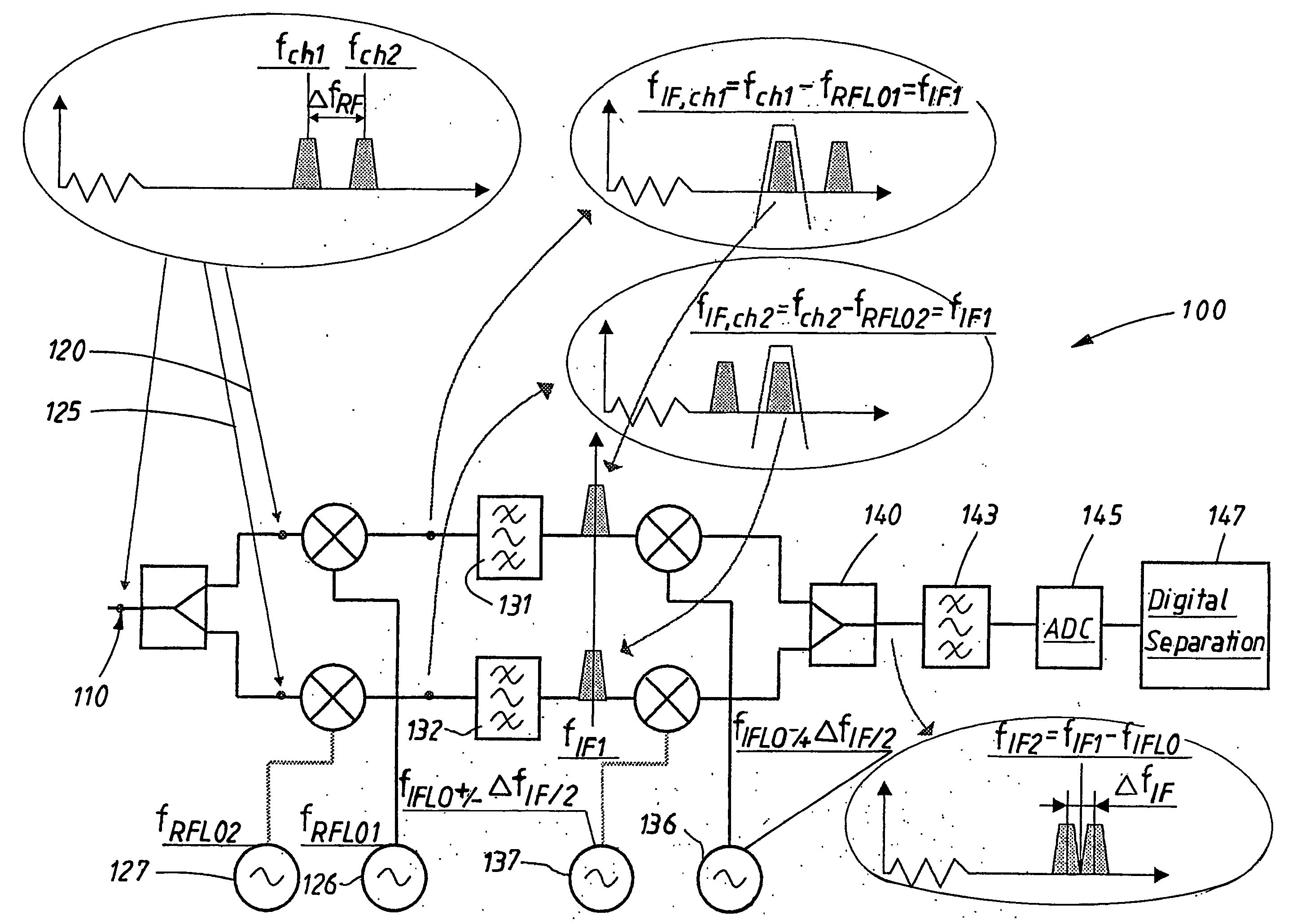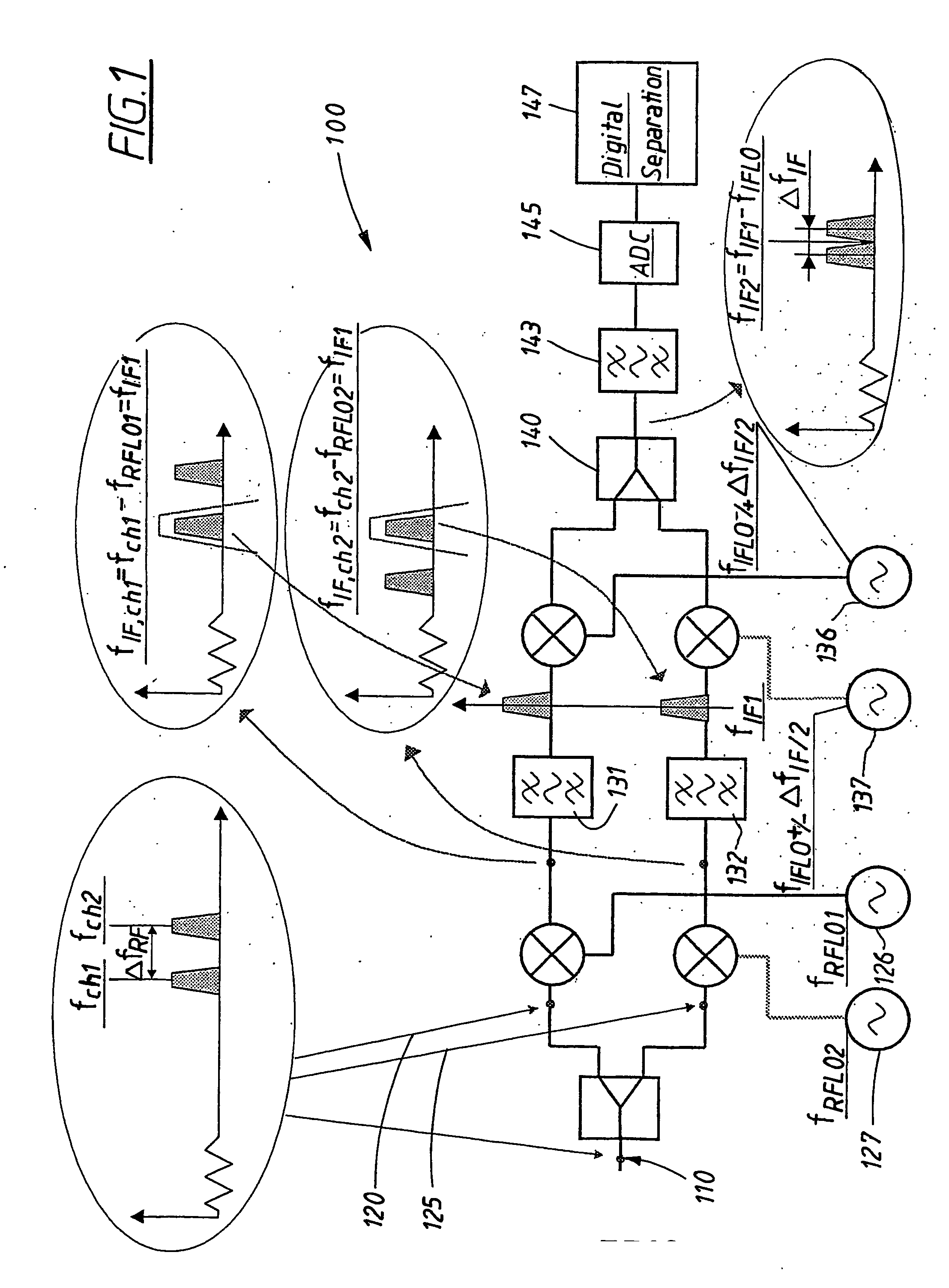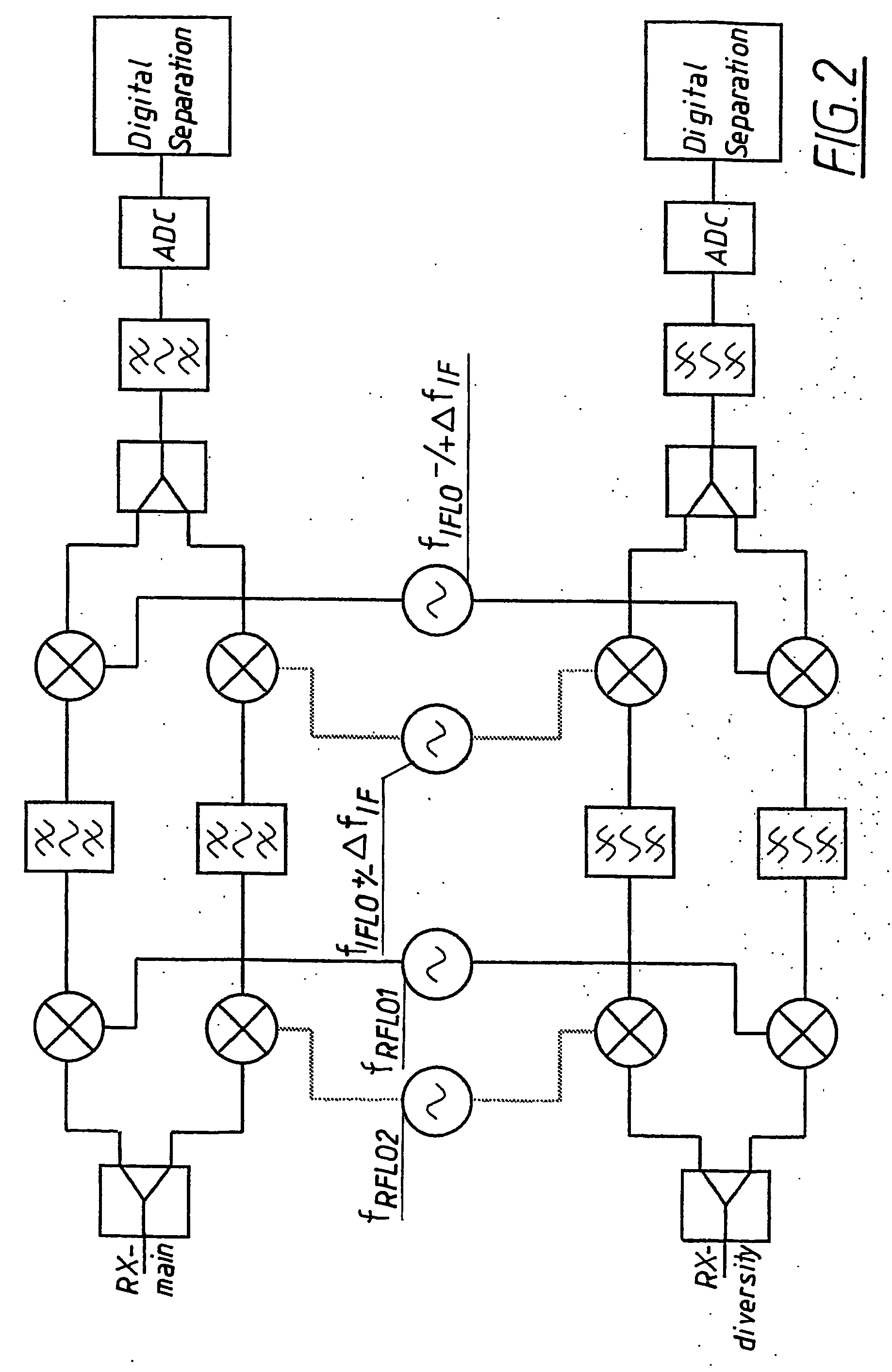Frequency shifting of wcdma carriers for variable carrier separation
a carrier and carrier technology, applied in the field of frequency shifting of wcdma carriers for variable carrier separation, can solve the problem of only slightly reducing the cos
- Summary
- Abstract
- Description
- Claims
- Application Information
AI Technical Summary
Benefits of technology
Problems solved by technology
Method used
Image
Examples
Embodiment Construction
[0017]FIG. 1 shows a schematic block diagram of a first embodiment 100 of the present invention. The invention will throughout be described as a multi-carrier signal comprising two signals, but it will be appreciated by those skilled in the field that the invention can be applied to a multi-carrier signal comprising a more or less arbitrary amount of carriers. Thus, the two-carrier signal is only used as an example for the sake of clarity, and should not be seen as a restriction of the scope of the invention, which can be applied to a signal comprising more or less any amount of carriers.
[0018] A multi-carrier signal microwave frequency signal, preferably within a cellular telephony system employing WCDMA-technology, is received at an antenna 110. The signal comprises two carrier signals, at a first f1, and a second f2 carrier center frequency with a frequency separation between them referred to as AfRF. According to the invention, the received signal is split into a first 120 and ...
PUM
 Login to View More
Login to View More Abstract
Description
Claims
Application Information
 Login to View More
Login to View More - R&D
- Intellectual Property
- Life Sciences
- Materials
- Tech Scout
- Unparalleled Data Quality
- Higher Quality Content
- 60% Fewer Hallucinations
Browse by: Latest US Patents, China's latest patents, Technical Efficacy Thesaurus, Application Domain, Technology Topic, Popular Technical Reports.
© 2025 PatSnap. All rights reserved.Legal|Privacy policy|Modern Slavery Act Transparency Statement|Sitemap|About US| Contact US: help@patsnap.com



